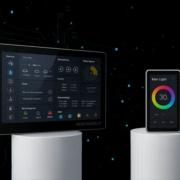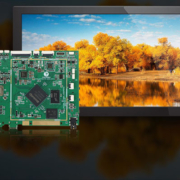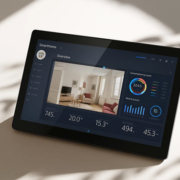What is the Best Single Board Computer?
The single board computer (SBC) has become an essential tool in many industries, from embedded systems and robotics to IoT devices and educational tools. As the name suggests, an SBC integrates all the essential components of a traditional computer onto a single board, offering a compact, cost-effective, and versatile platform. But with so many options available, how do you determine which SBC is the best for your needs? In this article, we’ll explore some of the top contenders in the market, key considerations when choosing an SBC, and how Portworld’s solutions can help meet your project requirements.
1. What is a Single Board Computer (SBC)?
A Single Board Computer (SBC) is a complete computer built on a single circuit board. It includes all the essential components such as the processor (CPU), memory (RAM), storage (e.g., eMMC or SD card), and input/output (I/O) ports. SBCs are popular for their compact size, low power consumption, and flexibility in various applications, making them ideal for use in embedded systems, robotics, smart devices, and DIY projects.
2. Top SBC Options on the Market
While there are numerous SBCs available, some stand out as industry leaders due to their performance, compatibility, and use cases. Let’s take a look at a few of the best options.
Raspberry Pi 4 Model B
- Processor: Broadcom BCM2711 (ARM Cortex-A72) Quad-core 1.5GHz
- RAM: Available in 2GB, 4GB, and 8GB variants
- Storage: MicroSD card (up to 1TB)
- Operating System: Raspbian (Linux-based)
- Best For: Education, DIY projects, and prototyping
- Why It’s Great: The Raspberry Pi 4 Model B is one of the most widely used SBCs due to its robust community, excellent documentation, and broad support for various applications, including robotics, media centers, and smart home projects.
BeagleBone Black
- Processor: AM335x 1GHz ARM Cortex-A8
- RAM: 512MB DDR3
- Storage: 4GB eMMC, microSD card
- Operating System: Debian Linux
- Best For: Industrial applications, robotics, and embedded systems
- Why It’s Great: The BeagleBone Black is known for its real-time processing capabilities and extensive I/O options, making it ideal for industrial control systems and projects requiring GPIO pins and analog I/O.
Odroid N2+
- Processor: Amlogic S922X (Quad-core Cortex-A73, Dual-core Cortex-A53)
- RAM: 4GB DDR4
- Storage: 16GB eMMC, microSD card
- Operating System: Linux, Android
- Best For: High-performance computing, home theater PCs (HTPCs), and media servers
- Why It’s Great: The Odroid N2+ offers significantly better performance than the Raspberry Pi 4 in terms of CPU and GPU power, making it perfect for tasks like media streaming, AI, and machine learning.
Portworld P6802 RK3568 Mainboard
- Processor: Rockchip RK3568 (Quad-core ARM Cortex-A55)
- RAM: 4GB/8GB DDR4
- Storage: eMMC, microSD card, and PCIe storage
- Operating System: Android, Ubuntu, Debian
- Best For: Industrial applications, smart home solutions, and digital signage
- Why It’s Great: Portworld’s P6802 RK3568 offers an excellent combination of power efficiency and performance, along with a robust selection of connectivity options, including Gigabit Ethernet, Wi-Fi 6E, Bluetooth 5.2, and MIPI touch support. It’s ideal for commercial-grade applications that demand high reliability and scalability.
3. What Makes an SBC the Best for Your Needs?
When evaluating which SBC is the best for your project, several factors should be taken into account:
Performance Requirements
Consider the CPU architecture, number of cores, clock speed, and GPU capabilities. If your project requires processing-heavy tasks like AI, multimedia, or gaming, look for an SBC with a powerful CPU and GPU.
Connectivity and Expansion
The best SBC for your needs will depend on the types of I/O and connectivity options you require. For example, if your project involves communication with other devices, you might want a board with multiple USB ports, Ethernet, Wi-Fi, Bluetooth, and possibly even 4G/5G or PoE (Power over Ethernet).
Operating System Support
Different SBCs support different operating systems. Ensure the SBC you choose is compatible with the OS you need, whether it’s Linux, Android, or a custom OS.
Size and Form Factor
Consider whether the size of the board fits the available space in your project. Some SBCs, like the Raspberry Pi, come in compact, flexible sizes, while others, like the BeagleBone Black or Portworld’s RK3568, are slightly larger but offer more I/O and specialized capabilities.
Power Consumption
If your project needs to be power-efficient, look for SBCs designed to operate on lower power levels. This is particularly important for battery-powered devices or energy-conscious applications.
4. Why Choose Portworld for Your SBC Needs?
Portworld’s SBC solutions, like the P6802 RK3568 Mainboard, are designed to meet the needs of industrial and commercial applications. Their embedded platforms offer customizable features, comprehensive documentation, and reliable engineering support, ensuring that you can tailor your system to your exact specifications.
Whether you’re developing a smart home automation system, industrial control solution, or edge computing device, Portworld’s focus on providing OEM/ODM customization ensures that their SBCs meet your performance and design requirements. With support for Android, Ubuntu, and Debian, and a range of connectivity options, Portworld’s products are ideal for those who require high performance and flexibility in their embedded systems.
There’s no single “best” SBC— the best board depends on the specific needs of your project. If you’re looking for versatility and ease of use for educational or DIY projects, the Raspberry Pi 4 Model B is a strong choice. For industrial applications or projects requiring more processing power and real-time capabilities, the BeagleBone Black and Portworld’s P6802 RK3568 Mainboard are excellent alternatives.








